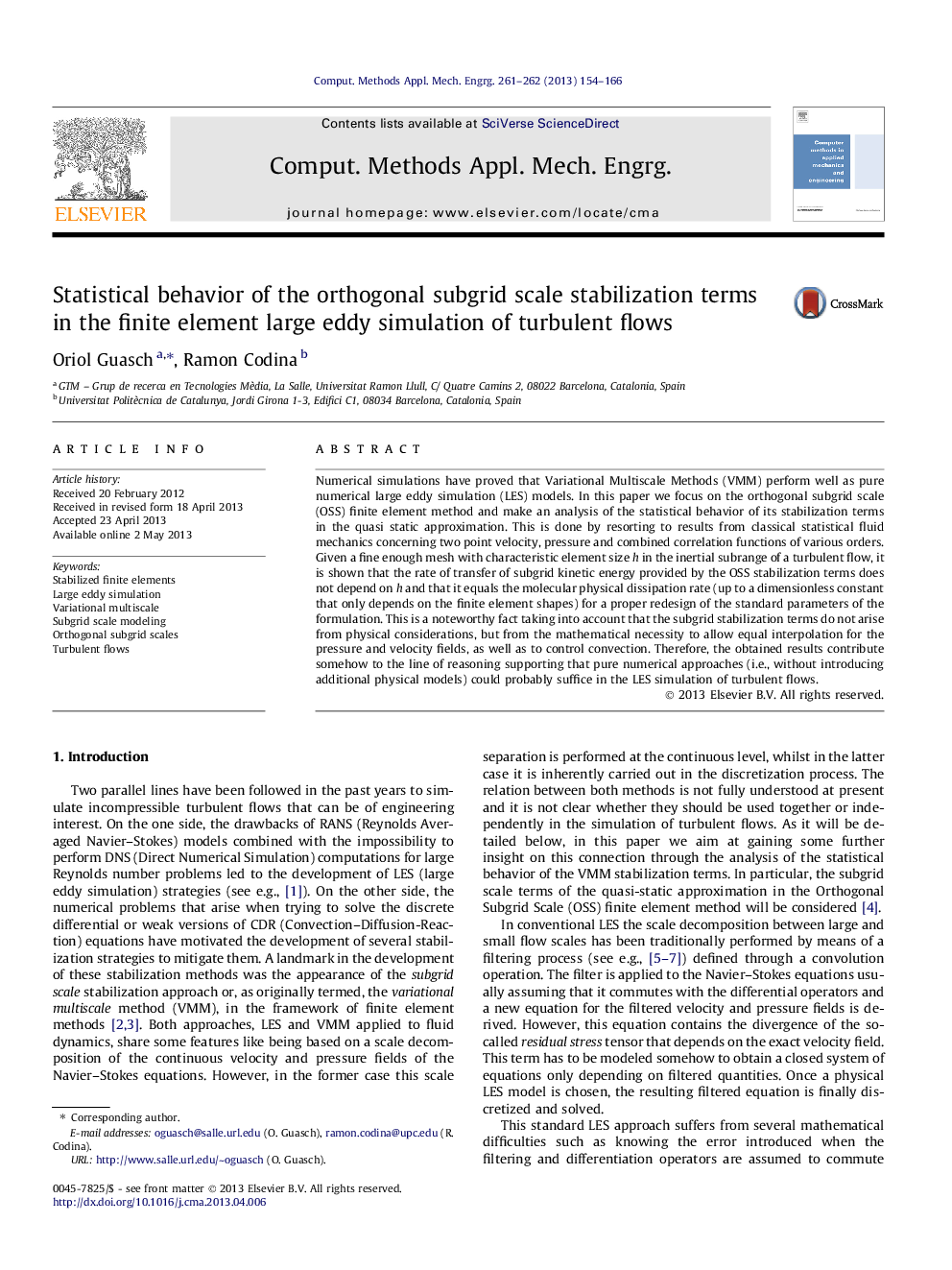| Article ID | Journal | Published Year | Pages | File Type |
|---|---|---|---|---|
| 498110 | Computer Methods in Applied Mechanics and Engineering | 2013 | 13 Pages |
•The OSS stabilization terms may be an alternative to large eddy simulation models.•Their statistical behavior has been analyzed for isotropic turbulence.•Velocity and pressure correlations from statistical fluid mechanics have been used.•The stabilization terms show the appropriate behavior in the inertial subrange.
Numerical simulations have proved that Variational Multiscale Methods (VMM) perform well as pure numerical large eddy simulation (LES) models. In this paper we focus on the orthogonal subgrid scale (OSS) finite element method and make an analysis of the statistical behavior of its stabilization terms in the quasi static approximation. This is done by resorting to results from classical statistical fluid mechanics concerning two point velocity, pressure and combined correlation functions of various orders. Given a fine enough mesh with characteristic element size h in the inertial subrange of a turbulent flow, it is shown that the rate of transfer of subgrid kinetic energy provided by the OSS stabilization terms does not depend on h and that it equals the molecular physical dissipation rate (up to a dimensionless constant that only depends on the finite element shapes) for a proper redesign of the standard parameters of the formulation. This is a noteworthy fact taking into account that the subgrid stabilization terms do not arise from physical considerations, but from the mathematical necessity to allow equal interpolation for the pressure and velocity fields, as well as to control convection. Therefore, the obtained results contribute somehow to the line of reasoning supporting that pure numerical approaches (i.e., without introducing additional physical models) could probably suffice in the LES simulation of turbulent flows.
